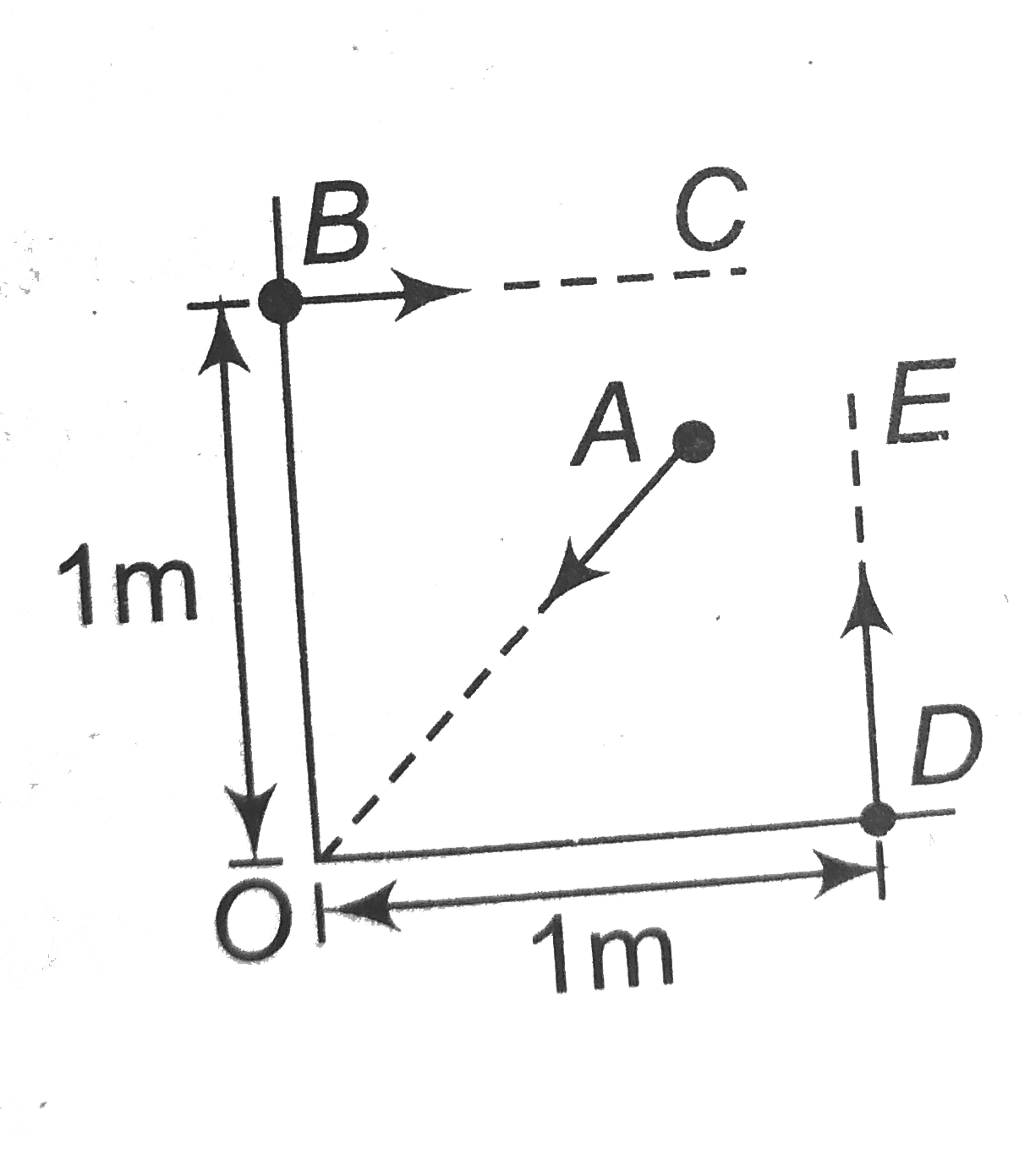A particle of mass M may move with the velocity v, along AO, or DE or BC. Then which of the following statements is not correct about particle's angular momentum about point O.
 .
.
It is zero when it is at A andmoves along OA.
It is same at all points along the line DE
It is of the same magnitude but oppositely directed B and D.
It increases as it moves along the line BC.
The correct Answer is:D
(d) When particle moves along BC, its angular momentum will remain same about O, as its perpendicular disatance remains same.
Topper's Solved these Questions
- ROTATIONAL DYNAMICSBOOK - A2ZCHAPTER - ROTATIONAL DYNAMICSEXERCISE - Work And Energy In Case Of Rotation
22 Videos
- ROTATIONAL DYNAMICSBOOK - A2ZCHAPTER - ROTATIONAL DYNAMICSEXERCISE - Rotation And Translation Combined And Rolling Motion
18 Videos
- ROTATIONAL DYNAMICSBOOK - A2ZCHAPTER - ROTATIONAL DYNAMICSEXERCISE - Torque , Torque Equation And Equilibrium Of A Rigid Body
29 Videos
- PROPERTIES OF MATTERBOOK - A2ZCHAPTER - PROPERTIES OF MATTEREXERCISE - Chapter Test
29 Videos
- THERMAL PROPERTIES OF MATTERBOOK - A2ZCHAPTER - THERMAL PROPERTIES OF MATTEREXERCISE - Chapter Test
30 Videos
Similar Questions
Knowledge Check
The correct statement about angular momentum is
Adirectly proportional to moment of inertiaBa scalar quantityCinversely proportional to moment ofDits direction always is tangential at a pointA particle with the position vector r has linear momentum p. Which of the following statements is true is respect of its angular momentum L about the origin ?
AL acts along pBL acts along rCL is maximum when p and r are parallelDL is maximum when p is perpendicular to rA particle is moving with constant angular velocity along the circumference of a circle. Which of the following statements is true
AThe particle so moving executes S.H.M.BThe projection of the particle on any one of the diameters executes S.H.M.CThe projection of the particle on any of the diameters executes S.H.M.DNone of the above
A partricle of mass m is projected with a velocity v at an angle of 60∘ with horizontal When the particle is at the maximum height. The magnitude ofits angular momentum about the point ofprojection is
View SolutionTwo particles A and B are moving as shown in the figure. Their total angular momentum about the point O is

View SolutionTwo particle A and B are moving as shown in the figure

Their total angular momentum about the point O is
View SolutionA particle moves with uniform velocity. Which of the following statements about the motion of the particle is true?
View SolutionA particle of mass of m is moving along the side of square of side 'a' with a uniform speed u in the X-Y plane as shown in the figure.

Which of the following statements is false for the angular momentum →L about the origin ?
View Solution